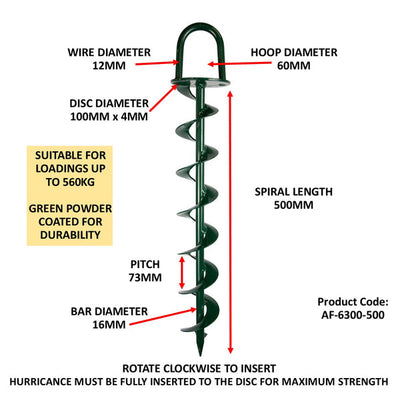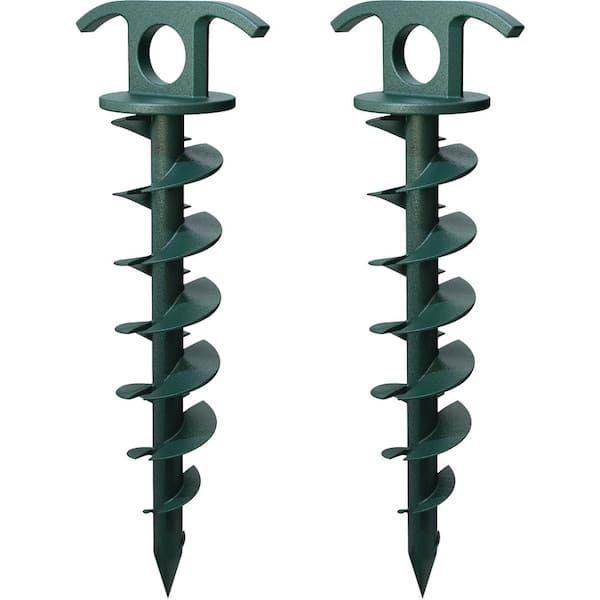The Science Behind a Strong Ground Anchor System
Wiki Article
Explore the Various Types of Ground Anchor for Your Next Project
When beginning on a construction or landscaping project, understanding the different sorts of ground supports available is essential to making certain both security and durability (Ground Anchor). From auger supports, which master diverse soil conditions, to stake anchors made for short-lived setups, the choices are many. Additionally, concrete and screw supports present unique benefits in particular scenarios, while deadman anchors are customized for applications requiring resistance to side forces. The option of an ideal support type can considerably affect the general success of your task, triggering additional exploration into their corresponding advantages and applications.
Auger Anchors
Auger supports are a prominent option in various building and landscaping projects due to their unique design and efficient anchoring capacities. These anchors are composed of a helical screw-like shaft that is driven into the ground, permitting a protected and secure hold. The spiral style helps with very easy installment and maximizes resistance versus lateral pressures, making auger anchors specifically reliable in applications such as fencing, short-term frameworks, and erosion control.The setup procedure of auger anchors is relatively uncomplicated. Auger anchors can be easily gotten rid of and recycled, which includes to their cost-effectiveness and sustainability.
Among the significant benefits of auger anchors is their capability to disperse loads uniformly across the bordering soil, reducing the threat of soil disruption and reducing ecological influence. In addition, they are much less susceptible to heaving or loosening up with time compared to traditional securing methods. Auger supports are a superb choice for jobs requiring trustworthy and sturdy anchoring remedies.

Risk Anchors
When it involves protecting frameworks in a selection of outside applications, risk supports provide a uncomplicated and reliable service. These supports are generally built from sturdy products such as steel or light weight aluminum, made to withstand ecological stresses while supplying optimal stability. Their easy design enables quick installment, making them a perfect option for long-term or momentary anchoring needs.Risk supports are specifically beneficial in securing camping tents, covers, and other light-weight structures versus wind and weather condition. They work by being driven right into the ground at an angle, producing a solid hold that resists pull-out pressures - Ground Anchor. The efficiency of risk anchors relies on several variables, including dirt type, wetness web content, and the angle of installment
For included safety and security, several risk anchors include add-on factors for ropes or bands, enabling tension changes as essential. In applications such as landscaping or building, they can effectively maintain devices or frameworks on uneven surface. In general, stake supports give a economical and functional solution for securing different exterior installments, making them a favored option for specialists and do it yourself enthusiasts alike.
Concrete Anchors
Concrete anchors provide a durable solution for protecting structures to concrete surface areas, making sure stability and safety and security in numerous applications. These supports are essential for tasks ranging from property building and constructions to large commercial installments. They come in various kinds, including growth anchors, glue anchors, and undercut anchors, each created for specific lots needs and ecological problems.
When set up,Growth anchors depend on mechanical mechanisms to grasp the concrete. They are perfect for tool to durable applications. Adhesive anchors make use of high-strength epoxy or material to bond the support to the concrete, using premium load-bearing abilities, particularly in broken concrete situations. Undercut anchors develop an one-of-a-kind form within the concrete, giving extraordinary holding power, especially in applications where tensile lots are common.
When performed appropriately, concrete supports considerably boost the architectural integrity of various tasks, making them crucial in contemporary building and construction techniques. Recognizing the particular demands of your project will certainly go to my blog aid in selecting the right type of concrete anchor for the job.
Screw Anchors

Screw anchors are a versatile securing remedy that can be successfully used in a range of applications where typical concrete anchors might not be sufficient. These anchors contain a helical design that enables them to be conveniently driven right into the ground, making them perfect for usage in soil and various other substrates. Their special structure pop over to these guys offers exceptional holding power and resistance to pull-out forces, making them ideal for numerous tasks, from landscape design to structural assistance.
One of the key advantages of screw supports is their ease of setup. They call for minimal tools and can typically be set up without the requirement for excavation, which saves both time and labor prices. Furthermore, screw anchors can be removed and reused, providing a lasting solution for temporary applications.
Screw anchors are especially useful in areas where dirt conditions are challenging, such as sandy or loose soils. Their capability to be installed at varying midsts enables customization based upon particular task demands. In general, screw supports provide a trustworthy and effective securing method, making them a superb selection for specialists and engineers seeking effective options for their projects.
Deadman Anchors
Deadman anchors serve as a durable option for maintaining frameworks in difficult problems, specifically where standard anchoring methods may fail. These anchors include huge, hefty items hidden underground, which develop resistance versus side pressures. The design commonly includes a horizontal component, such as a block of concrete or a metal plate, hidden in the dirt, to which cable here are the findings televisions or straps are connected.The performance of deadman supports exists in their ability to distribute tons over a larger location, lowering the risk of failing in unpredictable dirt conditions. They are specifically beneficial in applications such as keeping walls, short-lived frameworks, and slope stablizing, where soil movement can compromise the stability of the framework.
Installment of deadman supports calls for mindful planning to ensure they are placed at the correct depth and positioning, maximizing their load-bearing ability. While they might call for more labor and product than lightweight supports, their integrity in unfavorable problems makes them indispensable for lasting tasks. Deadman anchors are versatile and can be adapted to various applications, making them a go-to selection for engineers facing one-of-a-kind obstacles in their projects.
Conclusion
Auger anchors succeed in diverse soil problems, while stake supports match short-term applications. For concrete surfaces, growth and glue anchors provide dependable choices, and screw supports offer adaptability in tough terrains.Additionally, concrete and screw anchors existing unique advantages in particular situations, while deadman anchors are tailored for applications calling for resistance to side pressures - Ground Anchor.Auger supports are a popular choice in various building and landscape design tasks due to their special design and effective anchoring capacities. They come in different kinds, consisting of development supports, sticky anchors, and undercut anchors, each developed for particular load requirements and ecological conditions
Sticky anchors use high-strength epoxy or material to bond the anchor to the concrete, offering superior load-bearing abilities, particularly in fractured concrete situations. Overall, screw supports provide a trusted and effective securing method, making them a superb option for contractors and designers looking for efficient remedies for their projects.
Report this wiki page